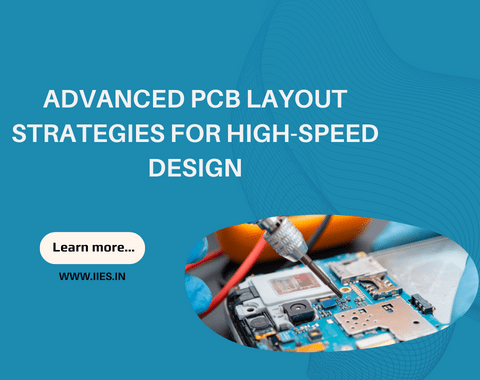
Welcome to our blog on Advanced PCB Layout Strategies for High-Speed Design! If you’re passionate about electronics and are looking to take your PCB design to the next level, you’re in the right place. In this blog, we will uncover the secrets and techniques behind designing high-speed printed circuit boards (PCBs) that deliver exceptional performance.
In today’s digital era, where data transfer and signal integrity are paramount, mastering advanced PCB layout strategies is crucial. High-speed PCB design plays a critical role in ensuring seamless and lightning-fast data transmission, from smartphones and computers to intricate industrial control systems.
In the digital age, high-speed PCBs are the backbone of modern electronic devices. From smartphones to computers, our world thrives on quick and efficient data transfer. However, as data rates and signal integrity demands continue to rise, designing high-speed PCBs has become more challenging than ever. But fear not, we are here to guide you through this complicated process and help you excel in your designs.
Choosing the right materials and stackup is crucial for high-speed PCB design. The type of PCB material you select can greatly impact signal integrity and electromagnetic interference (EMI) performance. We’ll walk you through the selection process, highlighting the impact of different materials on your design. Additionally, we’ll discuss the importance of stackup and how it can affect impedance control and signal propagation.
Signal reflections can degrade signal quality and even corrupt data. Impedance matching techniques are essential for minimizing these issues. We’ll explain the importance of controlled impedance traces and show you how to implement impedance matching effectively. By employing these techniques, you can ensure reliable and high-quality signal transmission.
The path signals take on a PCB can make or break their performance. In high-speed designs, routing plays a critical role in maintaining signal integrity. We’ll share expert tips on optimizing your routing to minimize delays and reduce signal distortion. With our guidance, you’ll learn how to route sensitive signals away from noise sources and ensure proper ground return paths.
Power integrity is vital in high-speed designs to prevent noise and instability. Our expert advice will help you strategically place decoupling capacitors to maintain a stable power supply. By doing so, you’ll ensure that your ICs receive clean and stable power, resulting in optimal performance.
Heat can be a major enemy in high-speed designs. We’ll guide you through effective thermal management strategies to keep your components cool and reliable. From utilizing copper planes to strategic placement of heat sinks, our tips will help prevent overheating and potential component failures.
High-speed PCBs are prone to electromagnetic interference (EMI) and compatibility (EMC) issues. We’ll walk you through effective mitigation strategies to ensure compliance with regulations. From grounding techniques to shielding cans, we’ve got you covered. Say goodbye to EMI headaches and hello to smooth and interference-free operation.
Validating your design before manufacturing is crucial. We’ll introduce you to powerful simulation tools that can help identify and resolve potential issues before they become costly problems. By utilizing these tools, you can save time and resources and ensure your design meets the highest standards.
You have now reached the end of our blog series on Advanced PCB Layout Strategies for High-Speed Design. We hope that this journey has provided you with valuable insights, techniques, and inspiration to become a master in the art of high-speed PCB design. Throughout this series, we have explored the fundamental aspects of PCB design that are crucial for optimizing signal integrity, minimizing noise, and ensuring reliable and efficient data transfer. From selecting the right materials and stackup to implementing impedance matching techniques, strategic routing, and addressing power and thermal management, we have covered a broad range of topics necessary for success.
By understanding these advanced PCB layout strategies and incorporating them into your design process, you can elevate your designs to new levels and outperform your competition. High-speed PCB design offers immense opportunities in various industries, from consumer electronics to medical devices and industrial control systems. By staying ahead of the curve and embracing cutting-edge techniques, you can position yourself as a leader in this exciting field. As a PCB designer, continuous learning is vital. Stay updated with the latest technology trends, industry standards, and best practices to ensure your designs are future-proof, efficient, and reliable. Leverage powerful simulation tools and collaborate with industry peers to validate and improve your designs, saving time and resources.
Must Read: Supercharge Your Data Analysis with MathWorks MATLAB
Indian Institute of Embedded Systems – IIES